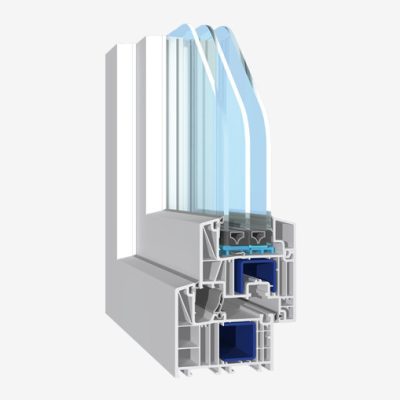An interior window sill is not just a necessary finishing touch for a window recess. In addition to its important function of decorating the interior and blending in with the overall design, its practical value is equally important. So which window sills should you choose to fulfil all these functions? Which materials should you choose and what should you look out for? Which of the solutions available on the market best suit our preferences?
What material for interior window sills?
When building or renovating a house, we face a dilemma: which interior window sills are the best? Which ones will meet our expectations and what material should they be made of so that we can enjoy using them for years to come? There are various material solutions available on the market, each with its own advantages.
- PVC – this is the material most often chosen for window sills. It is cheap and at the same time resistant to scratches and weather conditions. They are also light and easy to clean, but their appearance does not always meet the expectations of more demanding customers.
- wooden windowsills – currently made of glued wood, which makes the material resistant to high temperatures and changes in air humidity.
- board windowsills – successfully satisfy the tastes of more demanding customers. They can be made of veneered furniture board, i.e. with a thicker natural wood veneer. They can also be made of wood-based materials, such as laminated board, MDF or postforming board (chipboard covered with HPL laminate, with rounded edges), which are often used to make kitchen worktops. Wood-based materials are resistant to temperature changes, UV radiation, moisture and mechanical damage, and their surface can have any colour or pattern. Natural stone cladding – granite, in particular, is hard and resistant to discolouration as well as changes in temperature and humidity. However, stone is quite expensive and requires proper care. Artificial stone is a good alternative to natural stone and includes conglomerates, agglomerates, terrazzo and mineral composites. They are cheaper, more durable and less troublesome to maintain than natural stone and look just as impressive.
Read also:
A sill that matches the interior design
When choosing interior window sills, we must remember that they should not dominate the room. They should be chosen to match other design elements – floors, ceilings, furniture or kitchen worktops. However, it is most important that they match the design and have a similar finish to the window. Window sills that differ greatly in colour or contrast strongly with the window will look rather bad. Unless, of course, we have already planned to introduce elements of a strong colour into the interior. Stone window sills with a delicate, light texture would go well with a white window. In general, it is better to avoid window sills with very clear patterns that could dominate the interior design.
Windowsills for special tasks
When adapting an indoor windowsill for rooms with special conditions or intended for special use, the material and design must be carefully considered during the planning stage. This is important, for example, in kitchens and bathrooms, where there are often difficult conditions such as moisture, high temperatures or a higher risk of dirt.
In the kitchen and bathroom, you can also do without a window sill and use ceramic tiles as a finish under the window.
Read also:



